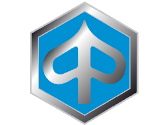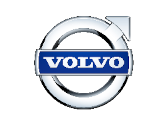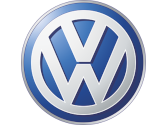How does a petrol engine work? Structure, components and replacement
The petrol engine as a reciprocating piston engine has been used in automotive engineering for a long time. This internal combustion engine scores points above all for its smooth running and sporty character. Unlike diesel engines, however, the petrol engine requires spark ignition by means of a spark plug to set the pistons in motion inside.
Main components of the petrol engine
The heart of the petrol engine is the engine block, which is the crankcase that holds the crankshaft. The cylinders and the cylinder heads mounted on them are also connected to the engine block. Channels for the engine oil are integrated into the internal structure; together with the oil pump and oil pan, they ensure reliable lubrication.
The crankshaft
The crankshaft inside the internal combustion engine is connected to the pistons via connecting rods. In this way, the pistons can move up and down while the crankshaft transmits its energy in the form of a rotary motion. For this purpose, the crankshaft protrudes from the engine block on the gearbox side, where it also accommodates the flywheel. In addition, the shaft drives the aggregate drive, and the camshaft is also driven from here.
Valves and camshafts
In a petrol engine, the valve train ensures that the valves always open and close at the right time. In this way, air and fuel are supplied to the cylinder at the right time and the residues of combustion are removed. For this purpose, the valves in the cylinder head are controlled by one or more camshafts. Depending on the type of engine, the camshaft is driven directly by the petrol engine via a timing chain, for example.
Injection system or carburettor
The injection or carburettor provides the right mixture of fuel and air to enable optimum combustion. Depending on the engine and its individual design, the mixture is formed either externally or in the cylinder. The mixture of petrol and air is either introduced into the intake tract or generated directly in the combustion chamber by injecting petrol.
Ignition on petrol engine
A petrol engine needs an ignition in order to function. This distinguishes the petrol combustion engine from diesel engines as a so-called spark igniter. In order to reliably ignite the mixture, each cylinder is fitted with one or more spark plugs. An ignition system provides the spark required for ignition.
Petrol engine – how it works
The spark-ignition petrol engine as it is known today is also known as the Otto engine. It is named after the German inventor Nicolaus August Otto, who is said to have been the driving force behind the development of the four-stroke petrol engine.
The petrol engine as a four-stroke engine
Even today, petrol engines are mainly used as four-stroke engines in cars. The advantages of petrol operation include good power delivery. The quiet and low-vibration operation is another difference between the petrol engine and the diesel engines also used in cars.
Function of the petrol engine in four strokes
- Inlet – fuel and air flow into the combustion chamber
- Compression – the mixture is compressed in the cylinder
- Combustion – the gas is ignited and burns
- Outlet – exhaust gas and heat are discharged
Functioning of the engines with petrol
Engines with petrol always work according to the same principle as a reciprocating engine with four strokes. In the intake stroke, the mixture of fuel and air is sucked into the combustion chamber or generated there. In the second stroke, the mixture is compressed as the piston moves upwards. Only under pressure can the mixture of fuel and air be ignited optimally. The subsequent ignition of air and fuel ensures the release of energy.
Energy release and discharge stroke
If air and fuel ignite, a downward piston movement takes place immediately. Thanks to the connection via connecting rods, the piston now transmits the power to the crankshaft. The crankshaft in turn transmits the energy, converted into a rotary motion, to the gearbox. In the fourth stroke, the piston again moves upwards and, with the exhaust valve open, ensures that heat and combustion residues are removed from the engine.
Petrol engine – purchase and replacement
If vehicles with petrol engines reach a high mileage, the internal combustion engines can wear out and break down just like other types of engines. Compared to an expensive and time-consuming repair after damage, it is often worthwhile to replace the entire engine. Instead of the defective engine, an intact engine is then installed in exchange.
Exchange engines in different variants
If the defective combustion engine is to be replaced by a replacement engine, there are various engine variants to choose from. There are therefore a number of points to consider when buying. For example, the scope of equipment for petrol replacement engines is not fixed. The engine can be equipped with all attachments and additional units, but it does not have to be. Even an engine consisting of an engine block with components inside and the cylinder heads can be called a replacement engine.
Petrol engine in exchange – these points must be observed
- Condition of the engine for petrol
- Indication of the mileage
- Attachment parts and scope of delivery
- Determine motor type and type
- Compare engine specifications
Used engines in exchange
An inexpensive and resource-friendly solution is to replace a defective engine with a good used petrol engine. Ideally, this is done by using an engine from a car recycling centre. These engines are removed intact from cars so that they can be reused. This is often the best and most cost-effective solution, especially for older vehicles, so that they can continue to roll along the roads for years to come.
What to consider when buying used engines
When selecting and purchasing used engines for petrol, the condition of the unit, the scope of delivery and the correct engine type should be taken into account. In the case of petrol engines, special attention should be paid to the components of the ignition system and mixture formation with regard to equipment and scope of delivery.
Scope of delivery should be considered
The ignition system as well as the carburettor for mixture formation or the injection system for injecting fuel under pressure are not always included in the offer. In this case, these items must be purchased or taken over from the existing engine. The same applies to all electrical components as well as electronics such as control units.
Selecting the right combustion engine
Although some engines from one manufacturer overlap in terms of the number of pistons and cylinders or in terms of power, it may be a completely different engine. In order to be able to select the appropriate engine, the engine code of the installed engine should be found out. The chassis number or the type code numbers from the vehicle documents are also often helpful in selecting the right item.



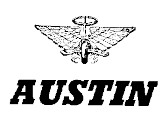















_logo.png)























_logo.png)



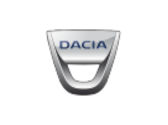





































_logo.png)








